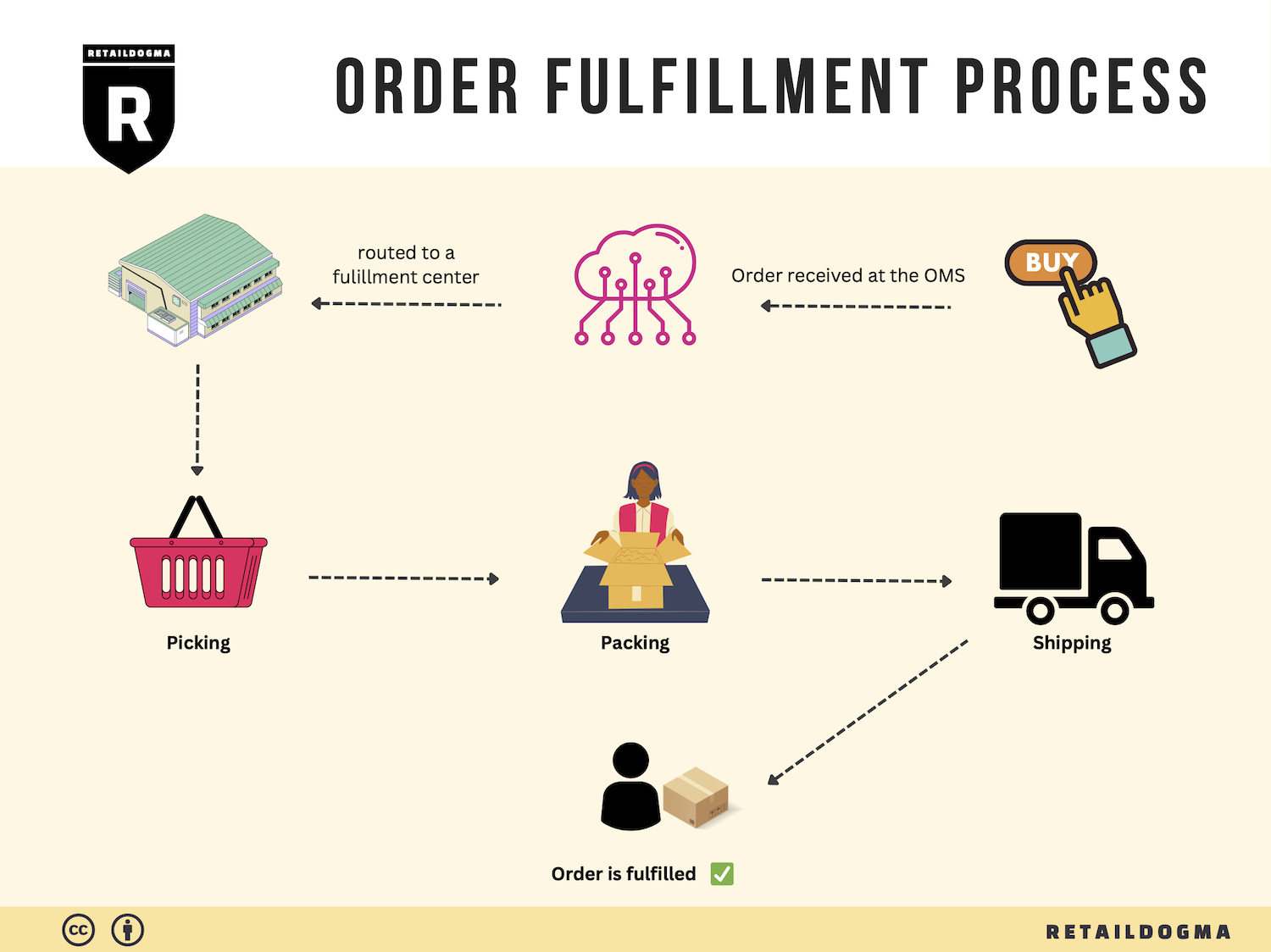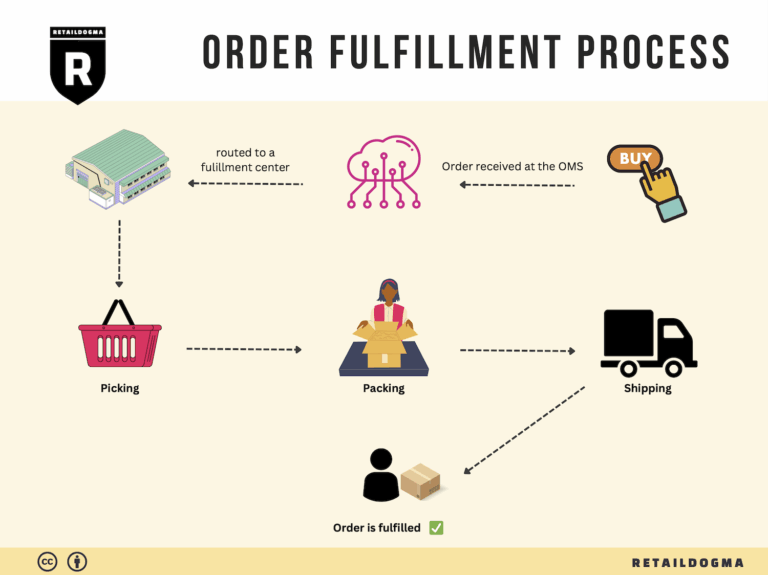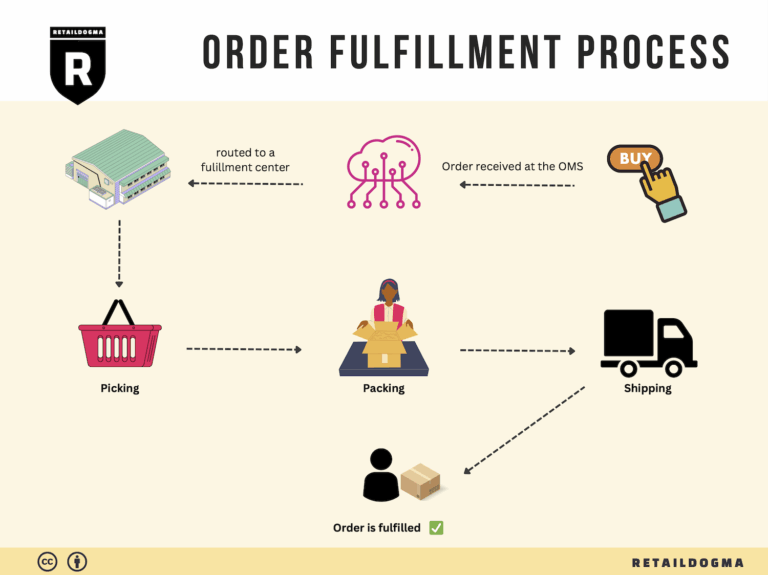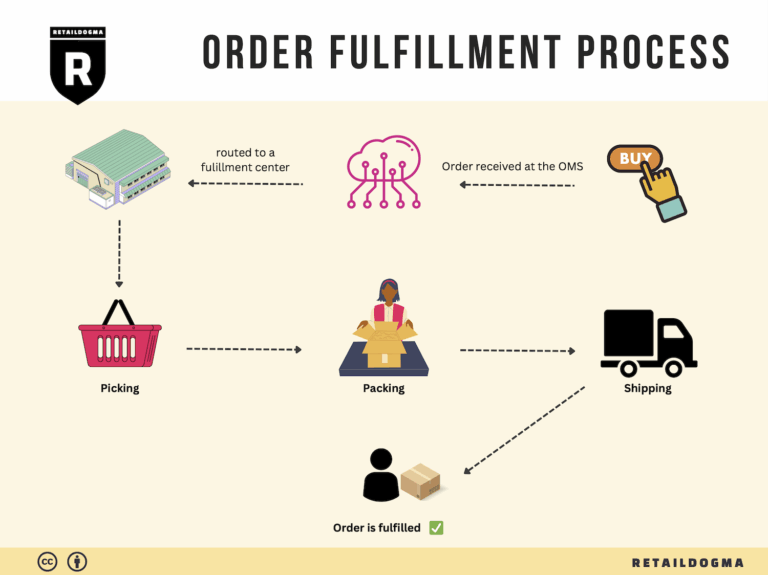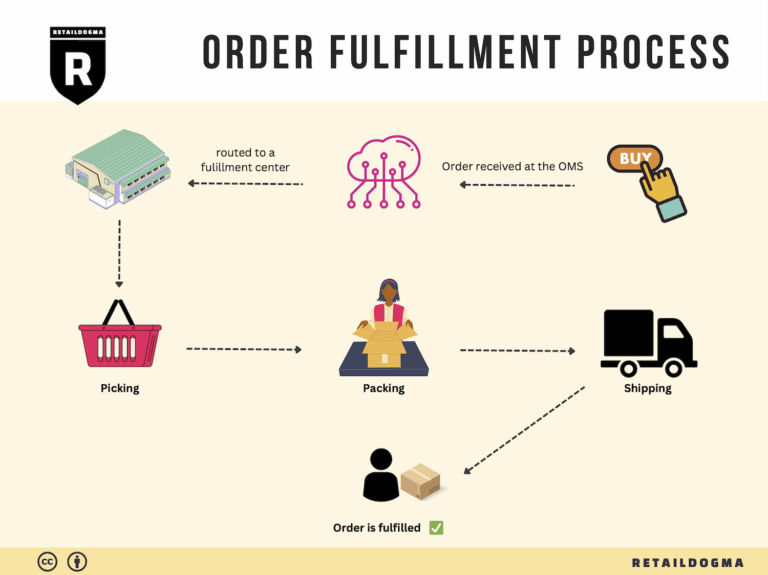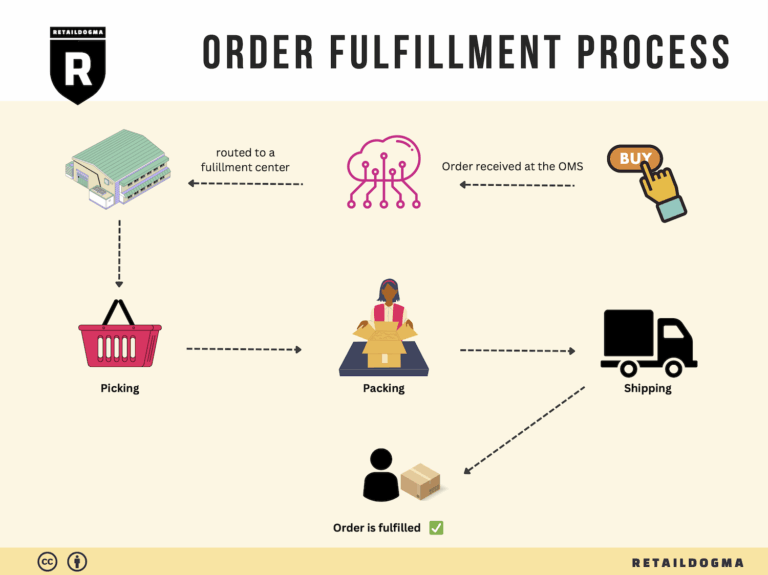What Is A Fulfillment Center? A Complete Guide (2025)
What is E-commerce Fulfillment? An Introduction for Growing Businesses
Understanding E-commerce Fulfillment: A Key to Scaling Your Business
As an e-commerce business owner, you may find yourself grappling with a common pain point: the overwhelming demands of packing and shipping orders. The excitement of acquiring new customers can quickly be overshadowed by the logistical challenges of fulfilling those orders efficiently. Fulfillment, at its core, is the process of getting a product from your inventory to your customer’s doorstep. It encompasses everything from receiving orders to managing inventory, packing products, and shipping them out. For growing businesses, mastering this process is crucial not only for customer satisfaction but also for operational efficiency.
In this guide, we will delve into various fulfillment models that can help streamline your operations. You’ll learn about Third-Party Logistics (3PL) providers, which offer a flexible solution for outsourcing your fulfillment needs. Additionally, we will explore Fulfillment by Amazon (FBA), a popular choice among e-commerce entrepreneurs seeking to leverage Amazon’s vast logistics network. Understanding these models will empower you to select the one that aligns best with your business goals.
We will also cover the core services involved in e-commerce fulfillment. This includes inventory management, order processing, packing, shipping, and returns handling. Each step in this process plays a vital role in ensuring that your customers receive their orders accurately and on time. By gaining insight into these services, you can identify areas for improvement in your current operations.
Choosing the right fulfillment partner is another critical aspect we will address. Factors such as location, technology capabilities, scalability, and customer service should weigh heavily in your decision-making process. A well-chosen partner can significantly enhance your logistics efficiency and ultimately contribute to your business’s growth.
Finally, we will discuss pricing considerations in e-commerce fulfillment. Understanding the costs associated with different fulfillment models and services will allow you to budget effectively and maximize profitability.
The goal of this guide is to equip you with the knowledge and tools necessary to make informed decisions about your logistics strategy. By navigating the complexities of e-commerce fulfillment, you can focus on what you do best: growing your business and delighting your customers.

What You’ll Learn In This Guide
- What is E-commerce Fulfillment? An Introduction for Growing Businesses
- The Order Fulfillment Process: From ‘Buy’ Button to Customer’s Door
- Comparing Fulfillment Models: In-House vs. 3PL vs. Dropshipping
- A Deep Dive into Amazon FBA: Pros, Cons, and Who It’s For
- Core Services Offered by Fulfillment Centers
- How to Choose a Fulfillment Partner: A 6-Point Checklist
- Understanding Fulfillment Pricing: A Breakdown of Common Fees
- Frequently Asked Questions (FAQs) about Fulfillment
- Conclusion: Is Outsourcing Fulfillment the Right Move for Your Business?
- Important Disclaimer
The Order Fulfillment Process: From ‘Buy’ Button to Customer’s Door
1. Receiving Inventory
The order fulfillment process begins with receiving inventory, a critical step that sets the foundation for efficient operations. When products arrive at the Amazon Fulfillment Center – BHM1, they are checked against purchase orders to ensure accuracy. This process involves scanning each item using a barcode scanner and logging its details into the inventory management system. Key terms associated with this step include Stock Keeping Unit (SKU), which uniquely identifies each product variant, allowing for precise tracking and management.
Receiving inventory accurately is vital because discrepancies can lead to stockouts or overstock situations, negatively impacting customer satisfaction and operational efficiency. In a fast-paced e-commerce environment, maintaining an accurate inventory count helps prevent delays and ensures that popular items remain available for customers.
2. Warehouse Storage
Once inventory is received, the next step is warehouse storage. At Amazon Fulfillment Center – BHM1, products are strategically placed in designated storage areas based on various factors, such as item size, weight, and demand frequency. This systematic organization allows for quick access when orders are placed. The warehouse employs advanced storage solutions, including shelving units and pallet racking, to maximize space utilization.
The importance of effective warehouse storage cannot be overstated. A well-organized storage system enhances operational efficiency by reducing the time workers spend locating items. Moreover, it contributes to safety by minimizing clutter and ensuring that pathways are clear. Utilizing a Warehouse Management System (WMS) aids in tracking the location of each SKU, further streamlining the fulfillment process.
3. Order Picking
The order picking stage involves retrieving items from their storage locations to fulfill customer orders. When a customer clicks the ‘Buy’ button, an order is generated, and a pick list is created, which details the items to be collected. Employees or automated systems, like robots, then navigate the warehouse, following the most efficient routes to gather the required products.
Efficient order picking is crucial as it directly impacts the speed of fulfillment. The faster the items are retrieved, the quicker they can be packed and shipped. Companies often utilize various picking methods, such as single order picking, batch picking, or zone picking, depending on their volume and operational structure. By optimizing this step, businesses can enhance order accuracy and reduce lead times, ultimately improving customer satisfaction.
4. Order Packing
After items are picked, they move to the packing stage. This step involves carefully packaging products to ensure they arrive at the customer’s door in perfect condition. The packing process includes selecting appropriate packaging materials, such as boxes and bubble wrap, and often utilizes automated packing systems to streamline operations.
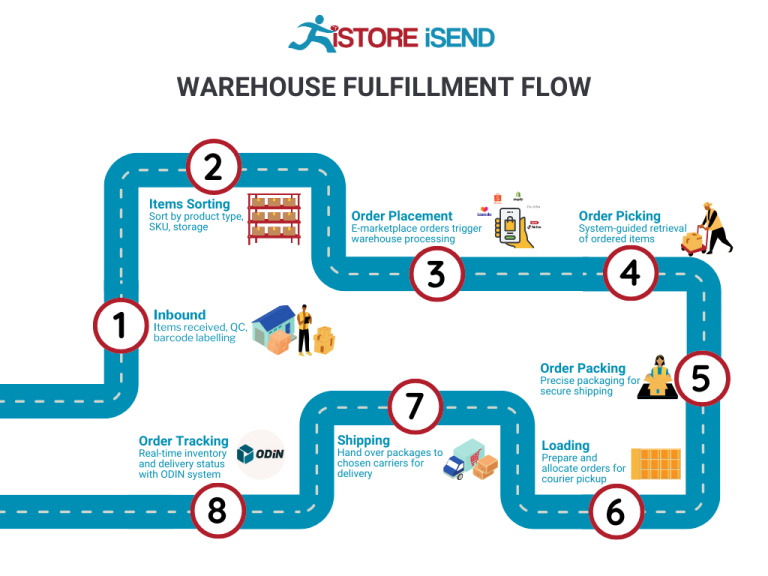
Packing is vital for several reasons. First, it protects items during transit, reducing the likelihood of returns due to damage. Second, effective packing can help minimize shipping costs by optimizing box sizes and weights. Key considerations during this stage include weight management and dimensional weight pricing, which can significantly affect shipping expenses. A well-executed packing process not only enhances the customer experience but also contributes to cost efficiency for the business.
5. Shipping & Delivery
The final step in the order fulfillment process is shipping and delivery. Once packed, orders are labeled and loaded onto delivery vehicles for transportation to the customer. Amazon Fulfillment Center – BHM1 employs various shipping methods, including ground and air services, to meet different delivery timelines and customer preferences.
Timely shipping is essential in today’s e-commerce landscape, where consumers expect rapid delivery. By leveraging advanced logistics and partnerships with carriers, Amazon ensures that orders are dispatched promptly. Tracking systems provide customers with real-time updates on their shipments, fostering transparency and trust. In this phase, key terms include Last Mile Delivery, which refers to the final leg of the delivery journey, and is often the most critical for customer satisfaction.
In conclusion, understanding and optimizing each step of the order fulfillment process—from receiving inventory to shipping—can significantly enhance operational efficiency and customer satisfaction for e-commerce businesses. By implementing best practices at each stage, entrepreneurs and operations managers can scale their logistics effectively and meet the growing demands of the marketplace.
Comparing Fulfillment Models: In-House vs. 3PL vs. Dropshipping
Fulfillment Models Overview
When scaling an e-commerce business, choosing the right fulfillment model is crucial for optimizing operations and meeting customer expectations. Below is a comparative overview of three primary fulfillment models: In-House Fulfillment, Third-Party Logistics (3PL), and Dropshipping.
| Model | Who Handles Inventory | Best For (Business Stage) | Key Advantage | Key Disadvantage |
|---|---|---|---|---|
| In-House Fulfillment | The business itself | Established businesses with stable sales | Full control over inventory and processes | High overhead costs and labor intensity |
| Third-Party Logistics (3PL) | A specialized logistics provider | Growing businesses and startups | Scalability and expertise in logistics | Less control over the fulfillment process |
| Dropshipping | Supplier or manufacturer | New businesses and entrepreneurs | Low upfront investment and risk | Low margins and reliance on supplier quality |
In-House Fulfillment
In-house fulfillment involves managing the entire inventory and order fulfillment process within the company’s own facilities. This model is particularly beneficial for established businesses that have a steady sales volume and wish to maintain complete control over their operations. By handling fulfillment in-house, businesses can ensure that they meet their specific service standards and quality controls, which can be a significant advantage in competitive markets.
However, this model comes with notable challenges. The initial investment in warehousing, staffing, and technology can be substantial, leading to high overhead costs. Additionally, as order volumes fluctuate, in-house fulfillment can become labor-intensive and may require hiring seasonal staff to meet demand spikes. The need for a dedicated logistics team also adds complexity, making this model less feasible for startups or small businesses that are still finding their market fit.
Third-Party Logistics (3PL)
Third-party logistics (3PL) providers offer businesses a way to outsource their fulfillment processes to specialized logistics companies. This model is ideal for growing businesses and startups that want to scale their operations without the heavy burden of managing logistics themselves. A 3PL partner typically handles inventory storage, order processing, and shipping, allowing businesses to focus on core activities like marketing and product development.
One of the key advantages of using a 3PL is the scalability it offers. As your business grows, you can easily adjust your logistics needs without the need for significant upfront investment in warehousing or staff. 3PLs also bring expertise in logistics management, which can improve delivery times and reduce shipping costs due to their established networks and volume discounts. However, the main disadvantage is the reduced control over the fulfillment process. Businesses may face challenges with communication and coordination, especially if the 3PL provider does not align with their service expectations.
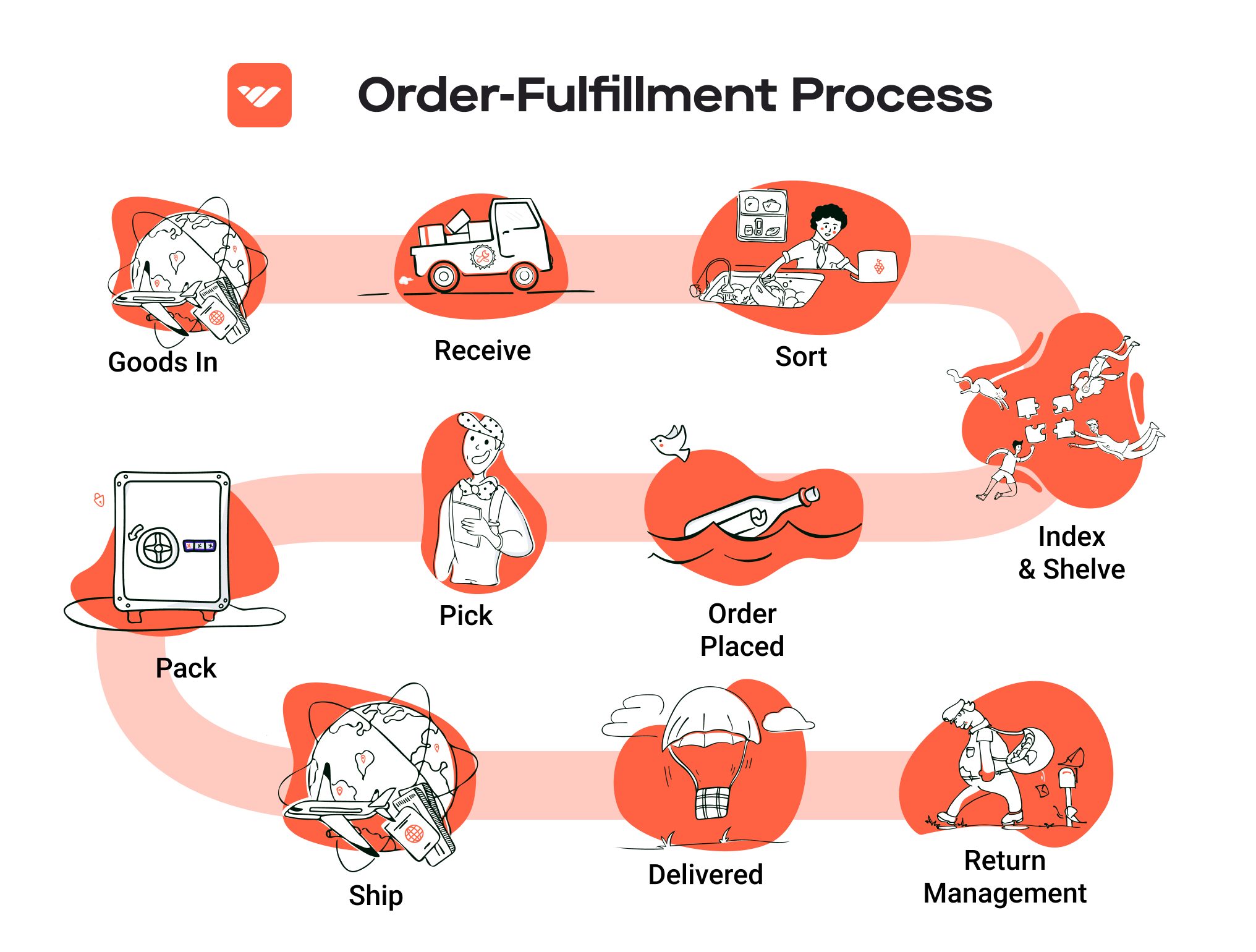
Dropshipping
Dropshipping is a fulfillment model where the retailer does not keep goods in stock but instead transfers customer orders and shipment details directly to the manufacturer or wholesaler, who then ships the products directly to the customer. This model is particularly appealing for new businesses and entrepreneurs because it requires minimal upfront investment and eliminates the need for inventory management.
The primary advantage of dropshipping is the low financial risk involved. Since you don’t have to purchase inventory upfront, your capital can be allocated to other areas such as marketing and customer acquisition. Additionally, dropshipping allows for a wide range of products without the burden of inventory, making it easier to test new markets and expand product lines. However, dropshipping comes with its challenges, including lower profit margins due to the costs associated with supplier relationships and shipping. Moreover, reliance on suppliers for product quality and shipping times can lead to customer dissatisfaction if not managed properly.
Conclusion
In summary, the choice of fulfillment model significantly impacts an e-commerce business’s operational efficiency and customer satisfaction. In-house fulfillment provides control but at a high cost, while 3PL offers scalability and logistics expertise with less control. On the other hand, dropshipping minimizes financial risk but can compromise profit margins and quality assurance. Business owners must evaluate their current stage, operational capacity, and long-term goals to select the most appropriate fulfillment strategy that aligns with their growth objectives.
A Deep Dive into Amazon FBA: Pros, Cons, and Who It’s For
Understanding Fulfillment by Amazon (FBA)
Fulfillment by Amazon (FBA) is a service provided by Amazon that enables sellers to store their products in Amazon’s fulfillment centers. Amazon then takes care of storage, packaging, shipping, and customer service on behalf of the seller. This service allows e-commerce businesses to leverage Amazon’s vast logistics network and customer base, significantly simplifying the order fulfillment process.
How FBA Works
-
Product Listing: Sellers create product listings on Amazon and opt into the FBA program. They need to prepare their inventory according to Amazon’s guidelines before shipping it to the fulfillment center.
-
Shipping Inventory: Sellers send their products to Amazon’s fulfillment centers. Amazon has multiple fulfillment centers across the globe, which helps ensure quicker delivery times to customers.
-
Storage and Management: Once the inventory arrives at the fulfillment center, it is stored until a customer places an order. Amazon uses sophisticated inventory management systems to track the products.
-
Order Fulfillment: When a customer orders a product, Amazon picks, packs, and ships the item directly to the customer. They also handle returns and customer service inquiries related to the order.
-
Payment Processing: Amazon processes payment transactions, and sellers receive their funds, minus Amazon’s fees, typically every two weeks.
Pros of Using FBA
-
Prime Eligibility: One of the biggest advantages of FBA is that it makes products eligible for Amazon Prime. Prime members tend to have higher purchasing power, and products fulfilled by Amazon often receive better visibility and higher conversion rates.
-
Customer Trust and Convenience: Customers trust Amazon’s fulfillment service due to its reputation for reliability and speed. This trust can lead to increased sales as customers prefer purchasing items that are backed by Amazon’s service guarantee.
-
Multi-Channel Fulfillment: FBA can be utilized for orders coming from other sales channels, not just Amazon. Sellers can use FBA to fulfill orders from their own websites or other marketplaces, allowing for a streamlined logistics process across various platforms.
-
Scalability: FBA allows sellers to scale their businesses without the need to invest heavily in warehousing or logistics. As sales increase, sellers can simply send more inventory to Amazon.
-
Focus on Core Business: By outsourcing fulfillment to Amazon, sellers can focus on other aspects of their business, such as product development and marketing, rather than getting bogged down in logistics and customer service.
Cons of Using FBA
-
High Fees: While FBA offers many benefits, it comes with costs. Amazon charges fees for storage, fulfillment, and optional services, which can add up and eat into profit margins, especially for low-priced items.
-
Strict Inventory Rules: Amazon has strict guidelines regarding inventory management, including how products should be packaged and labeled. Failure to comply can result in additional fees or even inventory being rejected.
-
Commingling Risks: When using FBA, sellers’ products may be stored alongside other sellers’ inventory. This can lead to potential issues such as receiving the wrong product or complications in managing inventory. Sellers need to be aware of this risk, especially if they are selling branded products.
-
Limited Control Over Shipping: When using FBA, sellers relinquish control over the shipping process. This can lead to inconsistencies in packaging and delivery times, which can affect customer satisfaction.
-
Inventory Storage Limits: Amazon imposes storage limits on FBA inventory based on sales performance. Sellers who do not move inventory quickly enough may face storage limits, which can disrupt their ability to fulfill orders.
Who is FBA Best For?
FBA is particularly well-suited for:
-
New Entrepreneurs: Individuals who are just starting their e-commerce business can benefit from FBA’s streamlined processes, allowing them to enter the market without the complexities of managing logistics.
-
Small to Medium-Sized Businesses: Businesses looking to scale their operations without investing heavily in warehousing and logistics can leverage FBA to reach a wider audience.
-
Sellers with High Sales Volume: Businesses that experience high sales volumes can take advantage of FBA’s efficiency and speed, ensuring that they can meet customer demand promptly.
-
Sellers with Diverse Product Lines: For businesses with multiple products across various categories, FBA simplifies the fulfillment process, allowing sellers to manage a large inventory without the hassles of logistics.
-
Businesses Focused on Customer Experience: Companies that prioritize customer service and satisfaction can benefit from Amazon’s reputation and fulfillment capabilities, enhancing their overall customer experience.
In conclusion, Fulfillment by Amazon is a powerful tool for e-commerce businesses looking to scale efficiently. While it comes with its own set of challenges, the advantages often outweigh the drawbacks, making it a viable option for a wide range of sellers. By understanding the ins and outs of FBA, businesses can make informed decisions about their fulfillment strategies and leverage Amazon’s robust logistics network to drive growth.
Core Services Offered by Fulfillment Centers
Inventory Management & Warehousing
Inventory management and warehousing form the backbone of any effective fulfillment operation. Fulfillment centers like Amazon Fulfillment Center – BHM1 employ advanced systems to track inventory levels, manage stock replenishment, and optimize storage space. This entails utilizing sophisticated software that provides real-time data on inventory counts, product locations, and reorder points.
The benefits of robust inventory management are manifold. First, it minimizes the risk of stockouts or overstock situations, ensuring that your products are available when customers demand them. This capability is crucial for maintaining customer satisfaction and loyalty, as delays in order fulfillment can lead to lost sales and negative reviews. Moreover, efficient warehousing practices, such as using FIFO (First In, First Out) methods, help in managing perishable goods or items with limited shelf life, reducing waste and enhancing profitability.
Additionally, optimized warehousing can lead to significant cost savings. By utilizing space effectively and implementing smart storage strategies, fulfillment centers can reduce overhead costs associated with excess inventory and storage fees. This not only improves cash flow but also allows businesses to invest more in growth initiatives.
Pick and Pack Services
Pick and pack services are integral to the order fulfillment process, where items are selected from inventory (picked) and then packed securely for shipment. Fulfillment centers streamline this process through automation and efficient workflows, ensuring that orders are fulfilled accurately and swiftly.
The primary benefit of pick and pack services is speed. As an e-commerce business scales, the volume of orders can increase exponentially. Fulfillment centers are equipped to handle high order volumes without sacrificing accuracy, which is crucial for maintaining customer trust. By leveraging technology, such as barcode scanning and automated sorting systems, fulfillment centers can minimize human error and reduce the time taken to process each order.
Moreover, the packaging process is optimized to ensure that products are protected during transit while also being visually appealing to customers. This attention to detail can enhance the unboxing experience, encouraging repeat purchases and positive word-of-mouth marketing. In a highly competitive e-commerce landscape, the ability to deliver orders quickly and efficiently can be a significant differentiator for your business.
Kitting and Assembly
Kitting and assembly services involve grouping multiple items together to create a single product or kit that can be sold as one unit. This service is especially beneficial for businesses that sell products that are often bundled together or require assembly before shipping, such as subscription boxes, gift sets, or DIY kits.
The advantage of utilizing kitting and assembly services lies in the enhanced customer experience. By providing customers with ready-to-use products, businesses can reduce the complexity of the purchasing process, making it more likely that customers will complete their orders. Furthermore, offering bundled products can increase average order value, as customers may be more inclined to purchase a kit than individual items.
Additionally, kitting services allow businesses to streamline their inventory management. Instead of tracking multiple SKUs for individual items, businesses can manage a single SKU for the kit, simplifying stock management and reducing errors. This can lead to improved operational efficiency and lower fulfillment costs, ultimately enhancing profitability.
Returns Management (Reverse Logistics)
Returns management, or reverse logistics, is a critical component of the fulfillment process that deals with products being returned by customers. Effective returns management includes handling returns efficiently, processing refunds or exchanges, and restocking items for resale. Fulfillment centers like Amazon Fulfillment Center – BHM1 have established protocols to manage returns seamlessly.
The benefits of robust returns management are significant. First, a well-organized returns process can enhance customer satisfaction. In an era where consumers expect hassle-free returns, providing a smooth and efficient returns experience can differentiate your business from competitors. This can lead to increased customer loyalty and repeat purchases, as customers are more likely to shop with a retailer that values their experience.
Moreover, effective returns management can provide valuable insights into product performance. By analyzing return data, businesses can identify trends, such as common reasons for returns or specific products that may need quality improvements. This information can guide product development and inventory decisions, ultimately leading to better product offerings and reduced return rates.
In conclusion, fulfillment centers offer a suite of core services that are essential for scaling e-commerce businesses. By leveraging these services—inventory management, pick and pack, kitting, and returns management—business owners can enhance operational efficiency, improve customer satisfaction, and drive growth in a competitive marketplace.
How to Choose a Fulfillment Partner: A 6-Point Checklist
Location & Warehouse Network
When selecting a fulfillment partner, the geographic location of their warehouses is crucial. A strategically located fulfillment center can significantly reduce shipping times and costs, enhancing customer satisfaction.
Why It’s Important:
– Shipping Speed: Proximity to your customer base can lead to faster delivery times, which is increasingly critical in e-commerce.
– Cost Efficiency: Reducing the distance products need to travel can lower shipping costs, especially for businesses with tight margins.
Questions to Ask:
– What is the location of your fulfillment centers, and how does that align with my customer demographics?
– Do you have multiple warehouses, and how do you optimize inventory distribution across them?
– Can you provide data on average shipping times to various regions?
Technology & Integrations
In today’s digital landscape, the technology used by your fulfillment partner can make or break your logistics operations. A partner that offers robust technology and seamless integrations can streamline your processes.
Why It’s Important:
– Real-Time Tracking: Advanced systems allow for real-time inventory tracking and order status updates, improving transparency for both you and your customers.
– Automation: Automation tools can enhance efficiency, reduce human error, and speed up order processing.
Questions to Ask:
– What software platforms do you use for inventory management and order fulfillment?
– Can your system integrate with my existing e-commerce platforms (e.g., Shopify, WooCommerce, Amazon)?
– How do you ensure data security and compliance?
Specializations (e.g., Cold Storage, Oversized Items)
Depending on your product range, you may require a fulfillment partner with specific capabilities. Whether you sell perishable goods, oversized items, or hazardous materials, finding a partner with the right specializations is essential.
Why It’s Important:
– Product Safety: Specialization ensures that your products are stored and handled according to industry standards, especially for sensitive items.
– Expert Handling: Specialized fulfillment centers have the expertise and equipment to manage unique products effectively.
Questions to Ask:
– Do you have facilities that can accommodate my specific product types (e.g., cold storage, fragile items)?
– What procedures do you have in place for handling specialized products?
– Can you provide case studies or examples of similar products you have successfully fulfilled?
Scalability & Capacity
As your business grows, your fulfillment needs will likely change. Choosing a partner that can scale with you is vital for long-term success.
Why It’s Important:
– Flexibility: A scalable fulfillment partner can adapt to seasonal spikes in demand, ensuring you never miss sales opportunities.
– Resource Management: Effective capacity management helps avoid overstocking or understocking, which can impact cash flow.
Questions to Ask:
– How do you handle fluctuations in order volume, especially during peak seasons?
– What is your current capacity, and how quickly can you scale up operations if needed?
– Can you accommodate sudden increases in inventory or order volume without compromising service quality?
Pricing and Contracts
Understanding the financial implications of partnering with a fulfillment provider is essential. Transparent pricing structures and flexible contracts can help you manage costs effectively.
Why It’s Important:
– Budgeting: Clear pricing helps you forecast expenses and maintain healthy cash flow.
– Avoiding Hidden Fees: Understanding all potential costs associated with fulfillment can prevent unexpected financial burdens.
Questions to Ask:
– Can you provide a detailed breakdown of your pricing model (e.g., storage fees, pick and pack fees, shipping costs)?
– Are there any additional fees I should be aware of (e.g., for returns, special handling)?
– What are the terms of your contracts, and do you offer any flexibility for scaling?
Customer Support & Reviews
The level of customer support provided by your fulfillment partner can impact your operations significantly. Additionally, researching reviews can give insight into their reliability and service quality.
Why It’s Important:
– Responsive Support: Quick and effective customer service can resolve issues before they escalate, ensuring smooth operations.
– Reputation: Reviews and testimonials can reveal potential red flags and highlight the strengths of a fulfillment partner.
Questions to Ask:
– What customer support options do you offer (e.g., phone, email, chat)?
– Can you provide references or case studies from current or past clients?
– How do you handle issues such as order errors, lost shipments, or inventory discrepancies?
Conclusion
Choosing the right fulfillment partner is a critical decision that can significantly influence your e-commerce business’s success. By considering the factors outlined in this checklist, you can make an informed choice that aligns with your operational needs and growth ambitions. Always remember to conduct thorough due diligence, ask pertinent questions, and evaluate potential partners against your specific business requirements to ensure a successful and fruitful collaboration.
Understanding Fulfillment Pricing: A Breakdown of Common Fees
Initial Setup Fees
Initial setup fees are often incurred when you first begin using a fulfillment service. These fees cover the costs associated with onboarding your products into the fulfillment center’s system. This includes creating your product listings, integrating your inventory management software with the fulfillment center’s systems, and initial training or support services.
Typically, these fees can range from a few hundred to several thousand dollars, depending on the complexity of your product line and the level of integration required. Some fulfillment centers may waive this fee for high-volume clients or offer a tiered pricing model based on your anticipated order volume. It’s essential to clarify what is included in the setup process to avoid unexpected costs.
Receiving Fees
Receiving fees are charged when your inventory arrives at the fulfillment center. This fee compensates the facility for the labor and resources involved in unloading, inspecting, and entering your products into their inventory management system.
These fees can be calculated per pallet or per unit, with costs typically ranging from $15 to $50 per pallet, depending on the facility and the complexity of the products. For smaller items, receiving fees may be charged on a per-item basis. It’s crucial to ensure that your shipments are prepared according to the fulfillment center’s specifications to avoid additional charges due to mislabeling or improper packing.
Storage Fees (per pallet/bin)
Storage fees are applied to inventory that is held at the fulfillment center. These fees can vary based on the size and type of storage used, typically charged on a per-pallet or per-bin basis.
For example, storage fees might be around $20 to $40 per pallet per month, while smaller items stored in bins may incur a fee of $5 to $10 per bin monthly. These fees can fluctuate based on seasonal demand, with higher rates often applied during peak seasons (such as holidays). To manage storage costs effectively, businesses should monitor their inventory levels closely and implement strategies to minimize excess stock.
Pick & Pack Fees (per item/order)
Pick and pack fees are incurred each time an order is fulfilled. This fee covers the costs associated with selecting items from storage, packing them for shipment, and preparing them for delivery.
Typically, these fees are calculated per item or per order. For instance, a fulfillment center might charge $1 to $3 per item for picking and packing services, or a flat fee per order, which can range from $3 to $10 depending on the number of items in the order. Businesses should evaluate their order patterns and consider bundling items to reduce overall pick and pack costs. Additionally, negotiating these fees based on volume can yield significant savings.
Shipping Fees
Shipping fees are one of the most variable costs associated with fulfillment services and can significantly impact your overall expenses. These fees depend on several factors, including the size and weight of the package, the shipping method selected (standard, expedited, etc.), and the destination.
Fulfillment centers typically have agreements with shipping carriers, which can result in discounted rates for businesses. Shipping fees can be calculated based on dimensional weight or actual weight, and they may vary based on seasonal surcharges. To optimize shipping costs, businesses should explore the most cost-effective carriers and shipping methods and consider utilizing regional distribution centers to shorten delivery times and costs.
Tips for Getting an Accurate Quote
When seeking an accurate quote for fulfillment services, consider the following tips:
-
Provide Detailed Information: Clearly outline your product types, anticipated order volume, and any special handling requirements. This information helps fulfillment centers assess your needs accurately.
-
Ask About Additional Fees: Inquire about any potential hidden fees, such as returns processing, packaging materials, or long-term storage costs.
-
Negotiate Terms: Don’t hesitate to negotiate pricing, especially if you expect high order volumes. Many fulfillment centers are willing to offer discounts or customized pricing structures for long-term contracts.
-
Compare Multiple Providers: Obtain quotes from several fulfillment centers to compare pricing structures, services offered, and overall value. Look beyond the base price and consider factors such as technology integration and customer service support.
-
Review Contracts Carefully: Before signing any agreements, review the terms thoroughly to ensure you understand all fees and conditions. Look for flexible terms that allow you to adjust your services as your business scales.
By understanding these common fees and following these tips, e-commerce business owners can make informed decisions that align with their operational needs and budget constraints.
Frequently Asked Questions (FAQs) about Fulfillment
1. What is Amazon Fulfillment Center BHM1?
Amazon Fulfillment Center BHM1 is a state-of-the-art logistics hub located in Bessemer, Alabama. It plays a crucial role in Amazon’s vast e-commerce network, handling a wide array of products and ensuring timely deliveries to customers. The facility is known for its advanced technology, efficient operations, and commitment to high-quality service.
2. What services does Amazon Fulfillment Center BHM1 offer?
BHM1 provides comprehensive fulfillment services that include receiving, sorting, packing, and shipping products. The center utilizes advanced automation systems to streamline operations, ensuring that items are accurately processed and dispatched promptly. Customer service is also a key focus, with dedicated teams available to assist with inquiries and support.
3. How does the order fulfillment process work at BHM1?
The order fulfillment process at BHM1 is designed for efficiency. Once an order is placed, the fulfillment center receives the items, sorts them using automated systems, and packs them for shipping. The goal is to minimize delays and errors, ensuring that customers receive their products in a timely manner.
4. What is the difference between a warehouse and a fulfillment center?
A warehouse primarily focuses on storing goods, while a fulfillment center is designed specifically for the processing and shipping of orders. Fulfillment centers like BHM1 are equipped with advanced technology and systems to handle inventory management, order processing, and logistics, making them integral to e-commerce operations.
5. What is a 3PL, and how does it relate to Amazon Fulfillment Center BHM1?
A Third-Party Logistics (3PL) provider is a company that offers outsourced logistics services, including warehousing, fulfillment, and transportation. While Amazon Fulfillment Center BHM1 is part of Amazon’s logistics network, businesses may choose to partner with 3PLs for additional flexibility and scalability in their supply chain operations.
6. How much do fulfillment services cost?
The cost of fulfillment services can vary widely based on several factors, including the volume of orders, the types of products being handled, and the specific services required. Businesses should evaluate their needs and consult with fulfillment providers to obtain tailored pricing that aligns with their operational goals.
7. What quality control measures are in place at BHM1?
Quality control at Amazon Fulfillment Center BHM1 is a top priority. The facility employs strict quality assurance procedures throughout the fulfillment process, from inventory checks to final packing. This meticulous attention to detail helps ensure that customers receive the correct items in excellent condition.
8. How can businesses contact Amazon Fulfillment Center BHM1 for inquiries?
Businesses and customers can reach out to Amazon Fulfillment Center BHM1 through the customer support channels available on Amazon’s website. This includes options for tracking orders, requesting refunds, and addressing any issues related to fulfillment services.
9. What are the operational hours of BHM1?
Amazon Fulfillment Center BHM1 operates 24/7 to accommodate the high volume of orders and ensure efficient processing. This continuous operation allows for flexibility in managing logistics and meeting customer demands.
10. How can businesses apply to work with Amazon Fulfillment Center BHM1?
To apply for positions at Amazon Fulfillment Center BHM1, individuals can visit the Amazon careers website or check job postings on platforms like Indeed. The facility also has an onsite hiring center where applicants can apply in person, making it accessible for those looking for employment opportunities.
Conclusion: Is Outsourcing Fulfillment the Right Move for Your Business?
Evaluating the Benefits of Outsourcing Fulfillment
As you consider the future of your e-commerce business, outsourcing your fulfillment operations can be a strategic move that yields significant benefits. By leveraging the expertise of a specialized fulfillment partner, such as an Amazon Fulfillment Center like BHM1, you can save valuable time and resources. This allows you to focus on core business activities, such as marketing and product development, rather than getting bogged down in logistics.
One of the most compelling advantages of outsourcing fulfillment is scalability. As your business grows, so do your logistics needs. A reliable fulfillment partner can easily adapt to fluctuations in order volume, ensuring that you can meet customer demands without the stress of managing inventory and shipping in-house. This flexibility is essential for maintaining customer satisfaction and supporting your business’s growth trajectory.
Moreover, partnering with an experienced fulfillment service brings a wealth of logistical expertise. These providers utilize advanced technologies and established processes to streamline operations, minimize errors, and enhance the overall customer experience. Their dedication to quality control and efficient order processing can significantly improve your brand’s reputation.
However, it is crucial to choose the right fulfillment partner to support your growth. Take the time to evaluate potential partners based on their capabilities, technology, and customer service. The right fit will not only enhance your operational efficiency but also contribute to your long-term success.
Take Action
To determine if outsourcing fulfillment is the right next step for your business, conduct a thorough audit of your current shipping and logistics processes. Assess your order volume, shipping times, and customer satisfaction levels. By understanding your specific needs and challenges, you can make an informed decision about whether partnering with a fulfillment service is the optimal path forward for scaling your e-commerce operations.
Important Disclaimer
⚠️ Important Disclaimer
The information in this guide is for educational purposes. Fulfillment services, pricing, and platform features change frequently. Always conduct your own due diligence and consult with providers directly before making business decisions.
